Japanese Design Archive Survey
DESIGN ARCHIVE
Designers & Creators
Katsu Kimura
Package Designer
Interview 01 7 September 2023, 13:00-15:00.
Interview 02 27 October 2023, 13:30-15:00.
PROFILE
Profile
Katsu Kimura
Package Designer
1934 Born in Utsunomiya City, Tochigi Prefecture.
1953 Entered Tokyo Metropolitan Kogei High School evening course in printing and crafts, and Japan Advertising Art School (Yotsuya) at the same time.
1957 Established Kimura Design Co.
1959 Name changed to Kimura Zuan-sha.
1960 Name changed to Packaging Direction.
1967 Awarded New York Top Packaging Prize.
1968 Exhibition 'PADICO' held (Ginza Yamano Gakki Hall).
1969 Establishes PADICO, assumes post of representative director (retires in 1978)
1975 Appointed supervisor of ZONART
1976 Opened first ZONART shop (Aoyama)
1979 "BOX & COX" exhibition (Ginza Fuma Gallery/Osaka Bangaro)
1988 "Kimura Katsu Packaging Direction" exhibition (Ginza Graphic Gallery)
2008 Permanent induction into the ADC (Tokyo Art Directors Club) Hall of Fame
2009 Kuwasawa Special Award
2015 Passed away
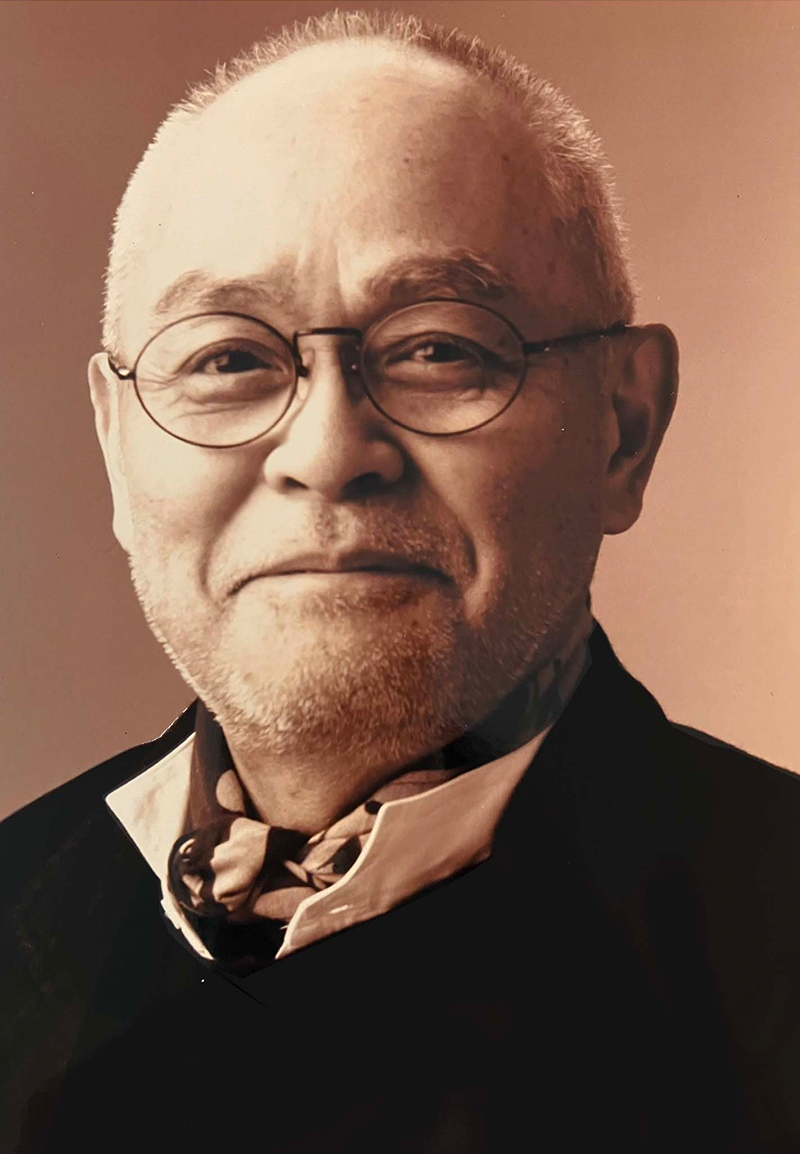
Description
Description
Katsu Kimura's contemporaries born in 1934 include Akira Uno, Ikko Tanaka (born 1930), Mitsuo Katsui (born 1931) and Kohei Sugiura (born 1932), who were born in the same year, followed by Iwao Hosoya (born 1935), Tadanori Yokoo and Makoto Wada (born 1936).
At a time when individual talents were shining like bright stars and exploring their own individual expressions, Mr Kimura chose and pioneered the anonymous field of graphic design known as 'package'. He was truly a pioneer in the field of packaging design.
However, the road there was tough. His parents died around the end of the World War Ⅱ, his six brothers and sisters were separated, and Kimura, who was still in primary school, had to fend for himself with his younger brother Susumu. They survived by selling peanuts in the Ginza area. In the midst of such a life of uncertainty, Mr Kimura was struck by the packaging that the Occupation Forces brought to Japan, which was proof of the richness of material civilisation. The colourful packages may have looked like flowers blooming in a black-and-white burnt field. He came to believe that packaging was the symbol of Japan's recovery and people's happiness. He studied design despite being forced to study hard and, step by step, worked his way up the ladder to become a package designer.
Mr Kimura had another thought that he put into the packaging. It was to design a box as a symbol of Japan's gift-giving culture, a box that represented the spirit and behaviour of Japanese gift-giving. Kimura did not limit himself to commercial work, but also organised numerous exhibitions throughout his life, exploring the possibilities of packaging and the culture of the box. His first solo exhibition, PADICO, was a legendary exhibition that transformed the image of packaging. Kimura established the materials company PADICO with the goal of 'creating uniquely Japanese packaging design' and launched the brand ZONART for his original products. He also taught at the Kuwasawa Design School for a long time, trained many young designers and led Japanese packaging design from various perspectives.
For this issue, we asked packaging designer Ving Takahashi, who studied under Kimura, his daughter Naho Iida about their perspectives on Katsu Kimura's personality, designs and the current state of his work and materials.
Masterpiece
Major works
Olive soap, Shiseido (1966).
“IchiMasamune”, Chugoku Jozo (1967)
Gift Boxes for Young People, Max Factor (1968).
“PADICO” exhibition Poster, "Bag with a Hole" and "Set up Box", self-produced (1968).
“Koetsu Gonomi Tsuya Ama Natto", Rova Confectionery (1973).
BOX & COX series “Banana”, “Cheese” and “Egg”, self-produced (1979).
"Edo Bayashi", Shinjuku Nakamuraya (1980).
"Uni-Arare" rice cracker series, Shinjuku Nakamuraya (1981).
"Penguin's Bar", Suntory (1984).
“Hinoki Clinical Skin Care Series”, Hinoki Pharmaceutical (1986).
“Fujichrome Professional Film”, Fuji Film (1987).
Shopping bags, Broomingdale's Department Store, New York (1990).
Ski Dome "SSAWS" logo mark and CI, Mitsui Fudosan (1993).
Millennium Commemorative Bottle (titanium), Hakkaisan (1999).
Saran Wrap, Asahi Kasei (2001).
"Yoroshiku Senman Arubeshi", Hakkaisan(2008)
Main books
"Katsu Kimura's Package Direction", Rikuyosha (1980)
"Art Deco Packaging" Rikuyosha (1986)
“BOX-ER: The Packaging of Katsu Kimura”, Rikuyosha (1988)
"20th Century BOX Package Design History", Rikuyosha (1998).
"Kimura Katsu's Work and Surroundings: From Matchboxes to Ski Resorts", Rikuyosha (1999).
GGG Books 79, "Katsu Kimura", Ginza Graphic Gallery (2007).

Interview 1
Interview01:Ving Takahashi
Interview: 7 September 2023, 13:00-15:00.
Place: IFF COMPANY INC.
Interviewee: Ving Takahashi
Interviewer: Keiko Kubota, Yasuko Seki
Author: Yasuko Seki
Mr Kimura really loved ‘package’.
He also valued the uniquely Japanese 'box'.
Meet Katsu Kimura
ー How did you meet Katsu Kimura?
Takahashi I met him as a teacher and student at the Kuwasawa Design School. Mr Kimura was about 32 when he first became a part-time lecturer at Kuwasawa, and I was 20 in my third year, in 1967. At the time, he was a packaging designer with several clients, including Max Factor, and was also extremely busy preparing for his own PADICO exhibition. I graduated in 1968 and got a job at a design office, but after about three years I got fed up with it. At that time, I had a chance to have a drink with Mr Kimura and when I told him about it, he said, "Do you come to my office?". I was in his office for the next eight years and became independent at the age of 30, and remained close to him until he passed away. Mr Kimura was my life master, my father, my friend and a really big part of my life.
ー Kimura lost his parents around the end of World War II when he was eleven years old, and he and his younger brother Susumu lived through a turbulent childhood and adolescence. Do you know how he went from these circumstances to becoming a successful packaging designer?
Takahashi I don't know the details of how it happened. I think his brother Susumu, who co-managed the office, knows more about it. However, I heard many stories. He told me that he had a hard time making a living during the post-war turmoil, and that he studied design at the same night school as Shigeru Akizuki at the Tokyo Metropolitan Kogei High School. Then, through the Occupation Forces, many American products entered Japan, and he admired the beautiful packaging that symbolised the affluent material society, especially the "Lucky Strike" cigarette packages. How that encounter inspired him to become a package designer, etc. In any case, American affluence, lifestyle and design attracted young people.
Looking back, when we met, Mr Kimura was 32 or 33 years old, but he had a number of staff, taught at Kuwasawa, prepared for independent exhibitions and, most impressively, drove a French Citroën DS, which was just so cool. I think he must have been a quick climb over a period of about 10 years.
ー What was the position of packaging design when you and Mr Kimura met?
Takahashi Social awareness of graphic design had clearly increased, partly due to the influence of the 1964 Tokyo Olympics. However, the understanding of package design was limited to "Corrugated cardboard?". Designers such as Mr Kimura, Shigeru Akizuki, Keiko Hirohashi and Hisashi Kaname appeared on the scene and began to present packaging design as a work of art, and the possibilities and interest of package design gradually began to be recognised. And the PADICO (PADICO = acronym for Package Derection Co., Ltd.) exhibition, which Mr Kimura organised as a top-billed exhibition, had an impact that turned the image of packaging upside down. I believe that he accumulated small jobs, one by one, and that these became well received, and he gained many clients and expanded the scope of his work.
ー Why did Mr Kimura stick to package design instead of graphics?
Takahashi The impact I received from packages like “Lucky Strike”, which symbolised the overwhelming wealth of America during the difficult post-war years. Then, Mr Kimura wanted to work on three-dimensional rather than two-dimensional design. Package design has to be designed not only from the front, but also from every 360-degree perspective. Because it is a three-dimensional object, there are so many elements and possibilities for design, such as making holes or transparency to emphasise the contents. I think that's what attracted him to it.
In the past, there were construction designers who specialised in structural design of packaging. In other words, there are many factors to consider, such as the thickness of the paper, the efficiency of the development, the amount of work involved in assembly, the strength of the box, fire resistance, surface treatments such as embossing, and so on, which are very deep. Then there was the need to make the moulds for the surface treatment of the packaging, so the designers had to have craftsman-like knowledge and skills, and they also had to make managerial decisions. However, the recent trend is to reduce risk, both in terms of design and in terms of funding. So it is more and more common to use existing package, paper bags, bottles and cans and design only the labels, without making the moulds.
Package design by Kastu Kimura
ー Mr Kimura was genuinely exploring the possibilities of package through the “PADICO” and “BOX & COX” exhibitions. What was the PADICO exhibition like?
Takahashi Kimura himself prepared all the planning, funding and artworks, and held the exhibition in a rented out Yamano Gakki Hall in the middle of Ginza, so he spent an enormous amount of money, time and effort. I also went to help out.
The works presented were full of surprising ideas: boxes and paper bags with holes, squishy plastic shaped boxes, boxes made of flimsy paper sewn with a sewing machine, boxes with six elements connected by ribbons. For example, it is insane to punch holes in a box. But by overturning common sense, boxes and bags take on a different meaning.
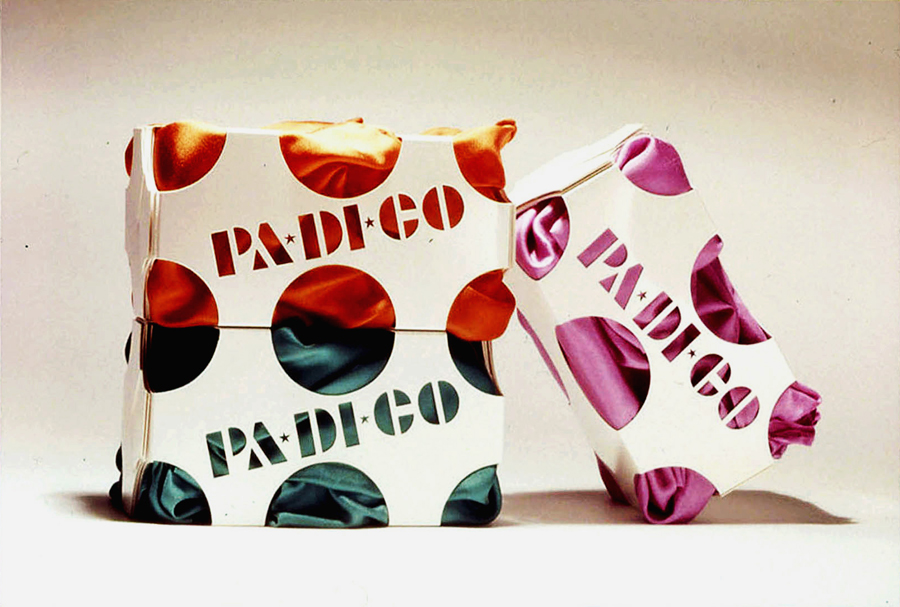
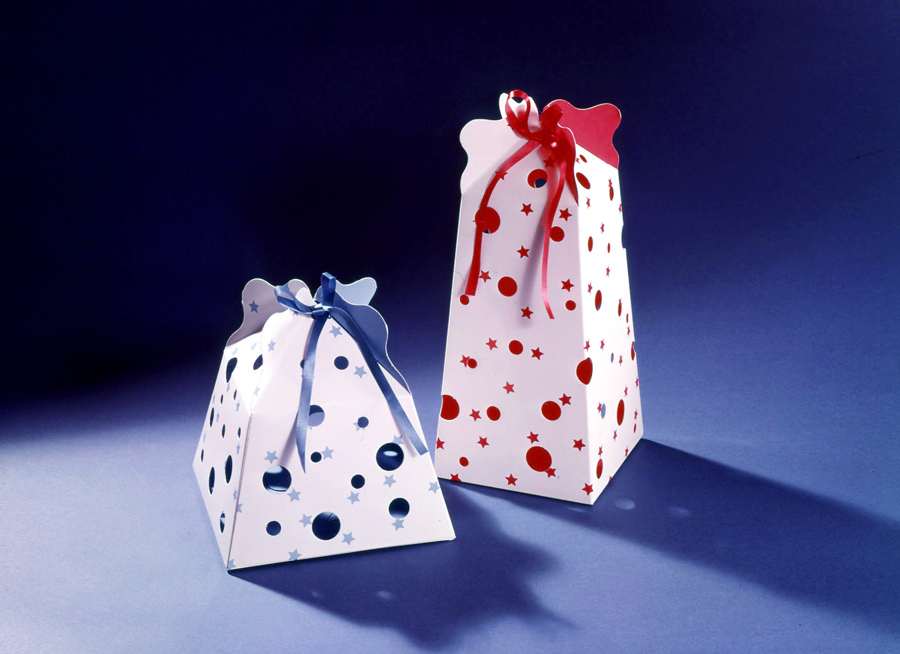
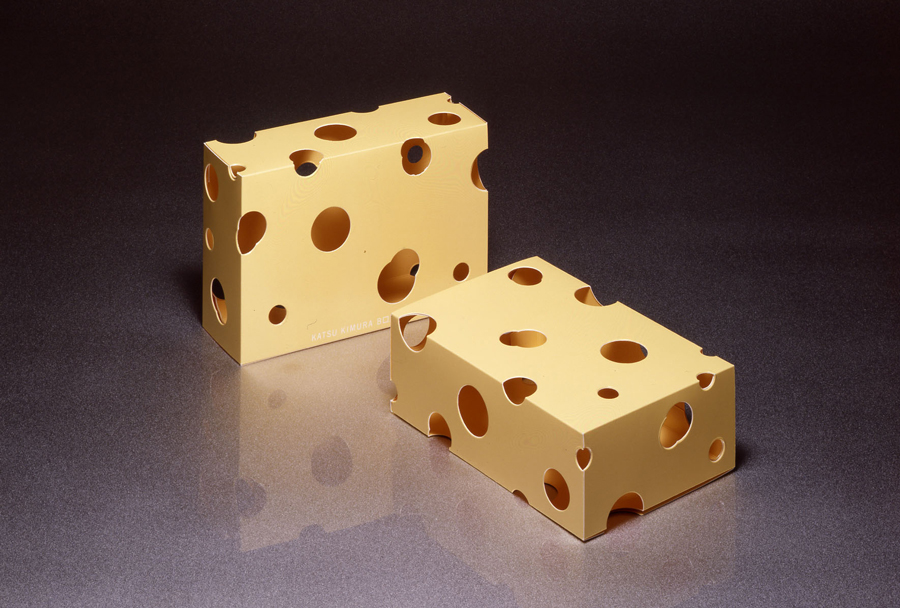
“PADICO” exhibition featured unique packaging artworks.
ー How did you see such packaging?
Takahashi I really like artistic boxes created by package designers, not boxes designed by artists. Mr Kimura presented many artistic works in the context of an exhibition, but they were not pictorial, and were made just in time to be used as packaging. I felt his pride as a package designer when he was competing from such a position. If I hadn't met this exhibition, I wouldn't have become a package designer, and I don't think I would be living the life I'm leading now.
ー Mr Kimura, at the PADICO exhibition, you presented a work using a paper clay called O’Clay, which he developed independently, and the following year he established a company called PADICO to realise the commercialisation of O’Clay.
Takahashi Yes. I think Mr Kimura wanted to take a leap forward in the package design genre from various approaches. PADICO, which he co-founded with his brother Susumu, has recently grown into a global company that handles a diverse range of materials, from doll making to crafts and handicrafts.
ー Afterwards, he also set up a company called ZONART, which designs, manufactures and sells gift package and packing materials?
Takahashi Yes. It was a company called ZONART and Company, in which Toa Shikogyo invested and sold products designed by Mr Kimura as a supervisor. I also took part in planning and design. For a while there was a shop in Aoyama, selling original packaging, wrapping paper, calendars and other paper products. These included revivals of boxes presented at the “PADICO” and” BOX & COX” exhibitions.

Unique and beautiful children's puzzles and games were also proposed in ZONART.
ー Mr Kimura was not only a designer, but also an entrepreneur?
Takahashi I owed a lot to Susumu in terms of business, but he was on a different scale to people today and was not confined to the framework of a designer. Today, there are no big names like him or Shigeru Akizuki.
ー Why is that?
Takahashi I think it needs a hungry spirit and a certain complex in order to create something new. Mr Kimura and I experienced post-war poverty and confusion in our time, and we had an overwhelming complex and admiration for the USA, which was the source of our energy. Perhaps it is difficult for new things to be born from the affluent world we live in today.
ー What kind of work did you do in Mr Kimura's office?
Takahashi I was an assistant. My work was to take his ideas and sketches and turn them into actual designs. When I joined his office, the number of staff had decreased and there were times when it was just he and me. When we had time, we would come up with various designs, create artwork and make proposals to the hotel. I think it was this kind of playful activity that started ZONART.
ー How did you feel about Kimura's designs?
Takahashi Kimura's designs for Japanese objects have a generous and unique 'ma' (pause), and I liked that taste.
ー Is there any work that has left a particularly strong impression on you?
Takahashi Mr Kimura was once asked to design the package for a certain confectionery. Another company was already selling a similar product. In order to differentiate the two products, he created new Japanese characters based on an old book by Honami Koetsu found in an antique shop in Kyoto, and designed the package using these characters. The name of the product is “Koetsu Gonomino Ama Natto (Koetsu's Favourite Sweet Natto)". In other words, he designed not only the package but also the story or brand image of Koetsu in Kyoto.
There is a tendency these days to avoid risk and adventure, but Mr Kimura was different. He listened to what the client had to say, debated and expressed his own image. To work on an equal footing with the client, he communicated directly with the top or decision-maker.
ー Now that the times and clients have changed, isn't it difficult to work as Mr Kimura does?
Takahashi Certainly, in the past, clients had the capacity to be amused by drastic designs. Nowadays, anything you do can't stick out, it can't be retracted, and something in-between is required. Market research takes precedence over designer competence.
ー Masayoshi Nakajo describes Mr Kimura as "a polite, self-possessed samurai who did his part". What was his personality like?
Takahashi The thing that surprised me the most when I went to help him with the PADICO exhibition was the 'company atmosphere'. His office was extremely busy at the time, but he had incredible leeway to play catch during lunch breaks and play pachinko in front of the station. There was a 'pause' and 'ride' that was unique to Mr Kimura, and I felt relaxed. So when I think of memories of him, I miss drinking, travelling and playing together more than anything else.
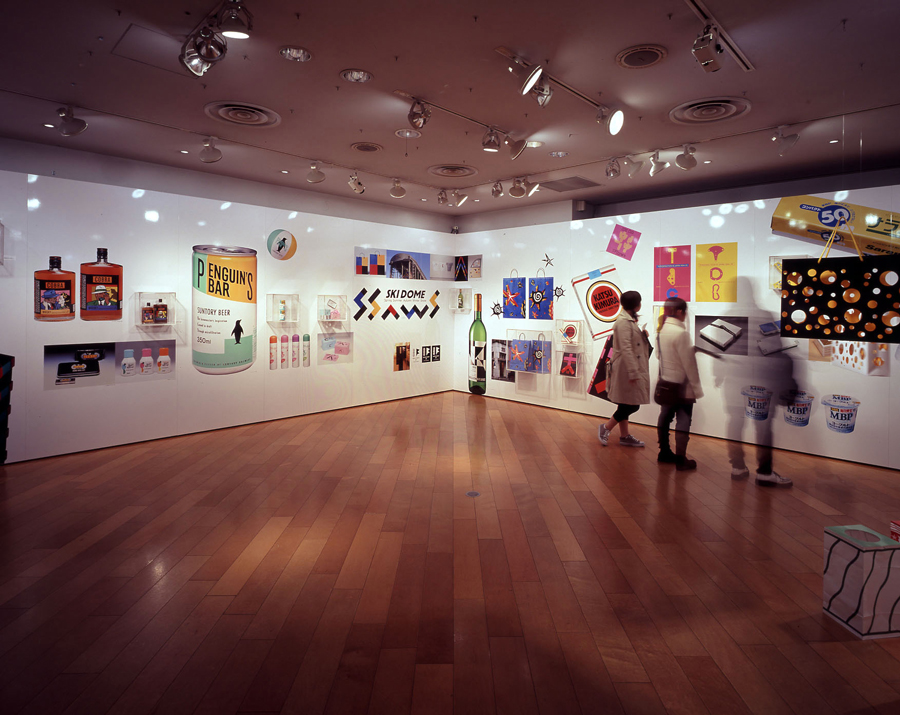

The works were graphically displayed in an exhibition at ggg.
ー Shin Matsunaga says in a different way, "Mr Kimura is one of the few people who can say 'I love design'.
Takahashi Mr Kimura really loved package. He also valued the uniquely Japanese 'box'. In the sense of conveying the heart through the object, he was particular about how much creative expression could be achieved in the area of significance beyond the function of the package. He designed the 'box = package' with Japan's unique culture and customs in mind.
ー Do you know about the current state of Kimura's works and materials?
Takahashi I have some of Kimura's works myself, such as 'Wooden Boxes', as well as photographs of his artworks and exhibitions. I think most of his other works are kept by his daughter Naho and his brother Susumu. However, I don't know if they have been organised and digitised. The packages are bulky and must be difficult to store.
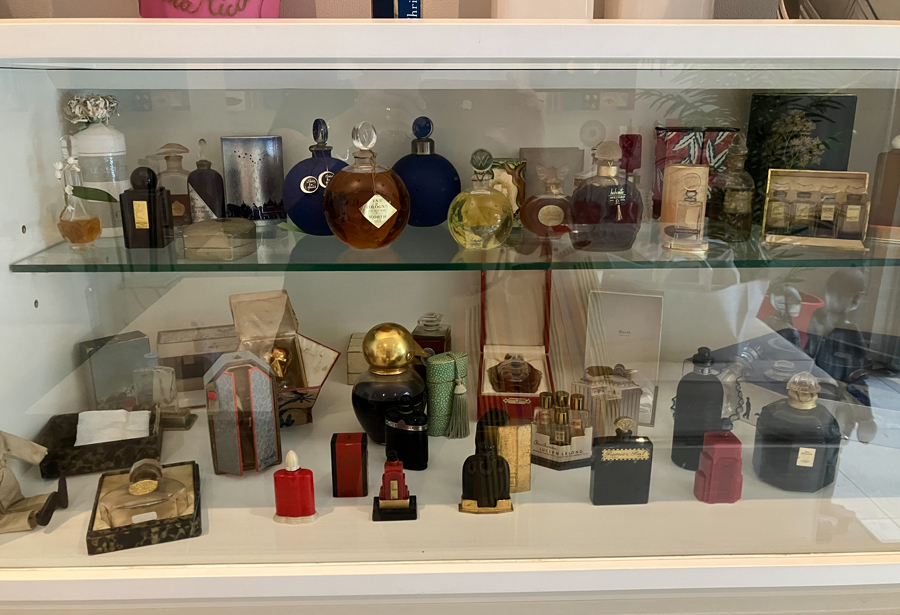
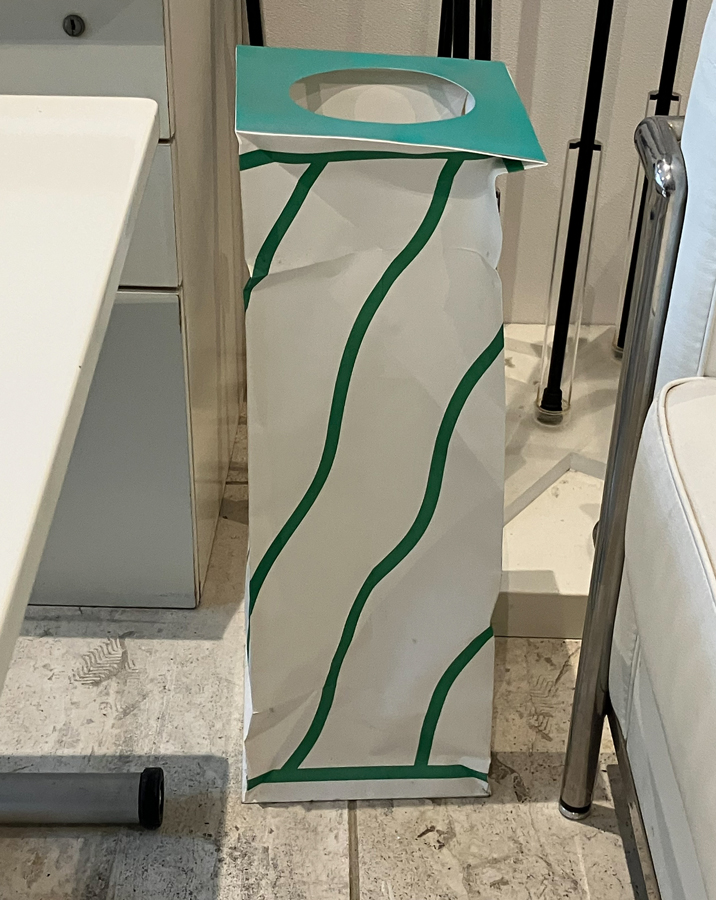
IFF COMPANY has a collection of perfume bottles, which Kimura was influenced to collect, and paper waste boxes from ZONART.
Kubota Mr Kimura had many hobbies. You also created your own lab, produced original goods (ZAKKA) and held exhibitions. Was this an influence from him?
Takahashi Mr Kimura is really a man of a large scale, and he was my mentor in life. That's why, from the time I became independent until now, I've always wondered what he would have done. I think, "What would Mr Kimura do?
ー Thank you very much for your time today.
Interview 2
Interview 02 Naho Iida
Interview: 27 October 2023, 13:30-15:00
Location: home of Ms Naho Iida
Interviewee: Ms Naho Iida
Interviewer: Keiko Kubota, Yasuko Seki
Author: Yasuko Seki
There is a limit to how much the bereaved families can do to preserve design works alone
Katsu Kimura's eldest daughter, Naho, now lives in a cosy modern house in Musashino, where Kimura spent the last years of his life. The house is furnished with Kimura's works and documents, as well as his favourite furnitures, allowing the viewer to imagine the scenes of Kimura's life in the past. In such a space, we interviewed Naho about Kimura's personality and the current state of his works and materials.
Katsu Kimura's design materials
ー Today, we would like to ask you about Katus Kimura as seen through the eyes of his daughter, Naho, and the current state of his work and materials.
Naho My father's physical strength began to decline three or four years before he passed away. His motivation must have declined accordingly, and in 2012 he moved out of his office and home in Nishiazabu and moved into my house. My sister lived next door and together we took care of our father. Since his death, my sister and I have been steadily sorting through my father's belongings and artworks.
However, I cannot store everything as my family live here. We have rented a boot room since the closure of my father's office and stored it, but unfortunately, in the last year or so, we have disposed of most of my father's packaged artwork. What is still in existence are ZONART cards, puzzle products for children, files of packaging and graphic materials, manuscripts, photographs and albums, positives of his work, his books and library, and artworks he created for exhibitions.
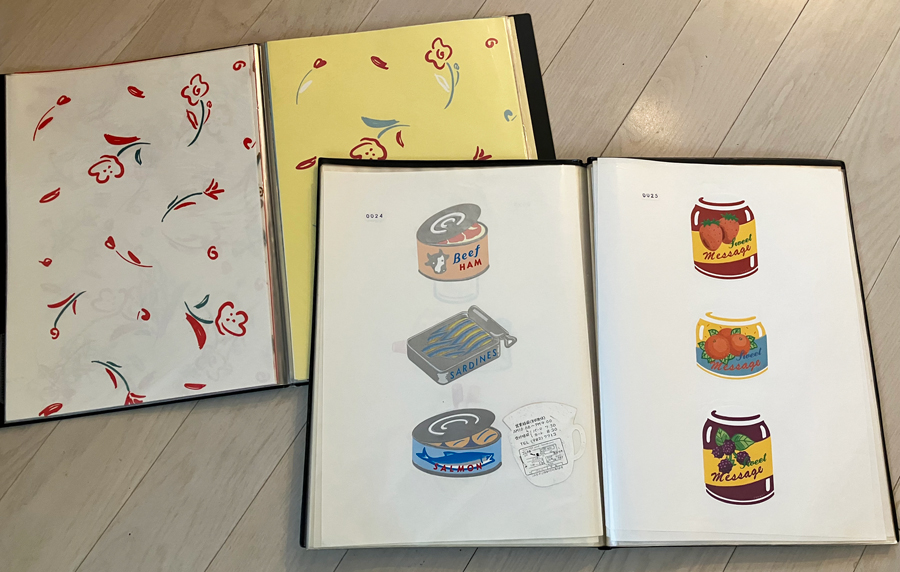
Naho's house holds a collection of cards commercialised by ZONART, colourful children's puzzles, and files of packaging and wrapping paper graphics.
ー Have you made progress in listing his works and materials?
Naho When we were looking for donation recipients, we made a list of surviving goods and artworks. Many of the items have already deteriorated due to mould and other factors. The number of extant objects is therefore minimal, so there is little need for a list. Positive films were already listed by my father.
ー Mr Kimura not only did commercial work, but also created artworks for exhibitions such as the PADICO and BOX & COX exhibitions. Were those also disposed of?
Naho Works from the PADICO exhibition and other exhibitions were already not left when my father was alive. The works from his later exhibitions were also difficult to store because the packages were three-dimensional objects, so they took up a lot of space, and they were made of paper, which was mouldy and sore. I thought positive films would be enough, but I think I have to do something about it because the positive films themselves also deteriorate.
ー When we spoke to Ving Takahashi the other day, he had digitised many of Kimura's photographs.
Naho I was relieved to hear that.
ー Mr Kimura is a leading figure in establishing Japanese package design. Was it difficult to donate his works?
Naho Yes. In fact, Keiko Kubota and many other people tried for several years to find a place to donate them, but in the end we had no choice but to keep them at home. There is a limit to how much the bereaved families can do to preserve such design works alone, and in many ways it is a heavy burden.
ー Before he passed away, did Kimura himself have any wishes for you to do this?
Naho My father was indifferent to anything other than the 'living now', so he had no wishes regarding the storage of his works. When we closed the office, it was overflowing with stuff and it was difficult to organise it with the secretary and staff.
ー Package design, which is a three-dimensional object, must be difficult to preserve. But product packaging is a very important 'physical evidence' that represents the material culture and society of a certain era. I would like to see them recorded and preserved somehow.
Daughter talks about her father, designer Katsu Kimura
ー The other day we spoke to Katsu Kimura's younger brother Susumu, who told us that Mr Kimura had a very difficult childhood and the end of the war. Do you know how he became a designer?
Naho I thought you might ask me about that story, so I prepared my father's memoir, "It All Started with the World War Ⅱ....., a story that must not be forgotten". The subtitle of it is "A story that must not be forgotten from 'Katsu', who experienced a war everyone did not want. I hope you will refer to this for more information.
ー According to his memoirs, "Mr Kimura entered the evening course of the Tokyo Metropolitan Kogei High School four years later than normal, but to make ends meet, he joined the 'Eibundo Printing House' on a part-time basis and worked on the production of printing blocks at the same time. At that time, he came across a poster for 'Design Students Wanted, Japan Advertising Art School' and directly asked Iwao Yamawaki, the headmaster of the school, who had studied at Bauhaus, for admission, but was turned down. However, he became acquainted with his wife Michiko Yamawaki, and with her help he managed to enrol. He spent his days at the Japan Advertising Art School, his nights at the Tokyo Metropolitan Kogei High School, and his nights making block prints for a living. After three years of convalescence from tuberculosis caused by such an unreasonable lifestyle, he returned to society and began working as a package designer. After several attempts, he was finally selected for the JAAC in 1960, which opened the way for him to become a designer". How do you see Mr Kimura as a designer?
Naho For me, my father was the kind of person who only thought about design 24 hours a day, 365 days a year. One of the most memorable moments for me was when I was still in primary school, I remember that my father would go to the kitchen at night and boil something in a pot. He would happily tell me that the thing he was boiling was paper mache.
ー That's a new material called ‘O‘Clay’, which was developed for the PADICO exhibition. Susumu told us that the packaging using O‘Clay was very popular. Why did you organise the PADICO exhibition in the first place?
Naho According to my father's memoir, "Ten years after I started working in package design, I wanted to break away from the influence of American design and explore a new way of Japanese package design". The material O‘Clay was created by dyeing toilet paper in various colours with dyes and kneading it with Yamato glue, inspired by the recycled pulp cover of a souvenir Brandy bottle he had bought at Schiphol Airport in the Netherlands. In fact, the packages using O‘Clay was so well received that department stores asked to commercialise them. Later, the white clay called ‘Formo’, which we launched after O‘Clay, was a great success and led to the current PADICO company.
ー The PADICO exhibition was an important epoch for Kimura, wasn't it?
Naho Yes, it was. I think it was around the same time that my father had a modern three-storey terrace house in Yutenji as his office. Next door was Shuji Terayama's workplace and it was a very nice space. I think it was a fulfilling time for my father. Then, in 1985, after winning a special prize at the Japan Package Design Awards for Suntory's 'Penguin's Bar', work went very well and we later moved our office to a larger space in Harajuku. Perhaps because it was during the bubble period, many people gathered there every day, and it was as glamorous as a 'party every day'.
Kubota Mr Kimura was a man of a large scale, with a wide range of friends and was always surrounded by many people and at the centre of it all. He had many hobbies outside of work.
Naho It was really like that. My father was a man of many talents and a lot of fun. When he was living alone in Nishiazabu after my mother passed away, he cooked quickly with ingredients from convenience stores and published his work in a coterie magazine called "Crineta" organised by Keisuke Nagatomo. It was called 'Convenience Store Cooking' and lasted for about three years.
ー I see from the book "The Work and Surroundings of Katsu Kimura" that he had built up a wide network of contacts.
Naho A creative director, Jun Maki (1948-2009) was an important friend of my father. Mr Maki was independent from Hakuhodo and did some great work with Masatoshi Toda and Masayoshi Nakajo, in addition to my father, but he died suddenly at the age of 60. My father was very close to Mr Maki, so he became depressed, and I think this affected his work in no small way.
ー The Mitsui Fudosan "Lalaport Ski Dome SSAWS": a huge indoor ski slope facility using artificial snow), which opened in 1993, became a big topic of conversation in itself. This project was also commissioned by Mr Maki, and Mr Kimura was involved in the brand design, including the CI. According to his memoirs, "In a year and a half, I was able to create 70 pictograms and several hundred items, from clothing to ski boards, shop products and, of course, packaging".
Naho I think it was an important work for my father on a large scale.
ー Finally, Naho, in your life, were you influenced by your father as a designer? What are they?
Naho When I think about it, Katsu Kimura's designs have been in my house since I was a child. I grew up in an environment where 'design' was a natural part of everyday life, so I feel that my father's 'visual influence' was significant. This has been passed on not only to us as his daughters, but also to his grandchildren. From an early age, my children have always said, "This is design, isn't it?" and they used the word 'design' as an adjective, not a noun. My children naturally identified what was 'design' and what was not, and this was clearly influenced by their grandfather, my father. Their design sensibilities were nurtured in a lifestyle where design pervades everything from crockery to detergent packaging.
For our family, Katsu Kimura was a free-spirited, fun and interesting 'person', but as a 'father' he was design-only, egoistic and problematic (laughs). My younger sister became an illustrator and my eldest daughter a textile designer, but I did not choose a career in design. But now I regret it a bit.
ー Thank you very much for your wonderful story.

